
Flowers have been used through the ages to express a range of different emotions. If you think about it, flowers are used by us to mark almost all the significant events of our lives – births, weddings, and even funerals.
Currently, there are about 4 million species of flowers in the world, and each of these flowers has its own unique story. In fact, many of these flowers have a fascinating history associated with them. Here, we look at 8 prominent flowers that aren't just beautiful to look at, they're also very influential and have left an indelible mark in history.
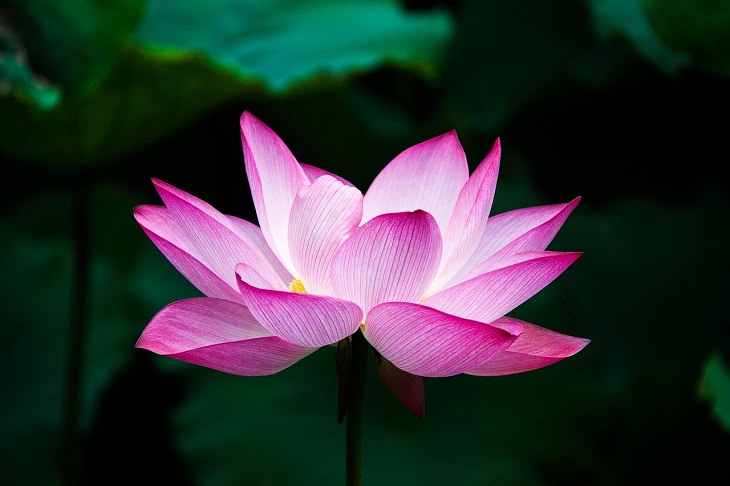
The lotus is the national flower of both India and Vietnam, and it is regarded as one of the most sacred flowers in the world. The lotus was a notable figure in Buddhist and Egyptian cultures. The lotus flower closes its petals at dusk and opens them again at dawn. It faces east to greet the rising sun. The emerging lotus was a symbol of the sun in ancient Egypt. For instance, in ancient Egypt, the blue lotus (also known as the blue water lily) can be found in various works of art, upon numerous papyrus paintings and on jewelry. It was even discovered in Tutankhamen's tomb. The lotus was also seen as a symbol of fertility, resurrection, and purity in Egypt in those days.
In Buddhist and Hindu cultures, the lotus flower is often regarded as an epitome of perfection and purity. Since the flower blooms most beautifully from the deepest and thickest mud, it symbolizes the human who rises from the darkness of the world into a new way of life.
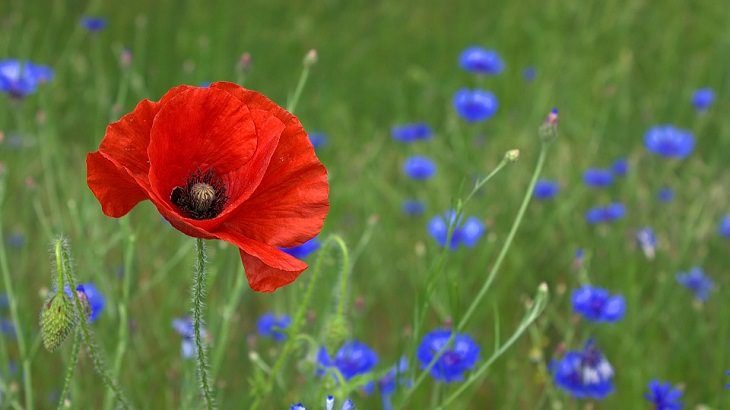
During World War I, as soldiers began walking back across fields and farmlands in huge numbers, plenty of flowers were trampled under their foot. Many landscapes across Europe were desecrated as a result of this. Curiously, however, some bright poppy flowers started appearing in those wastelands.
Poppy seeds can remain dormant for hundreds of years but will grow when the ground has been disturbed. This, added with the fact that the spring of 1915 was particularly hot, led to the Flanders Field near Ypres in Belgium to bloom with the most magnificent sea of red poppies. This beautiful scene became poignant to many soldiers who had fought in the war. Canadian soldier, Major John McCrae, who had lost his friend Lieutenant Alexis Helmer in the war, went on to pen a poem as a tribute to the scene and what it symbolized to him.
Titled “In Flanders Field”, the poem started with the lines:
“In Flanders fields, the poppies blow
Between the crosses, row on row,
That mark our place; and in the sky
The larks, still bravely singing, fly
Scarce heard amid the guns below.”
The stirring scene was immortalized in the poem forever and the poppy flower became a symbol of respect for not just the fallen soldiers in the war, but for anyone who had lost their lives in any conflict.
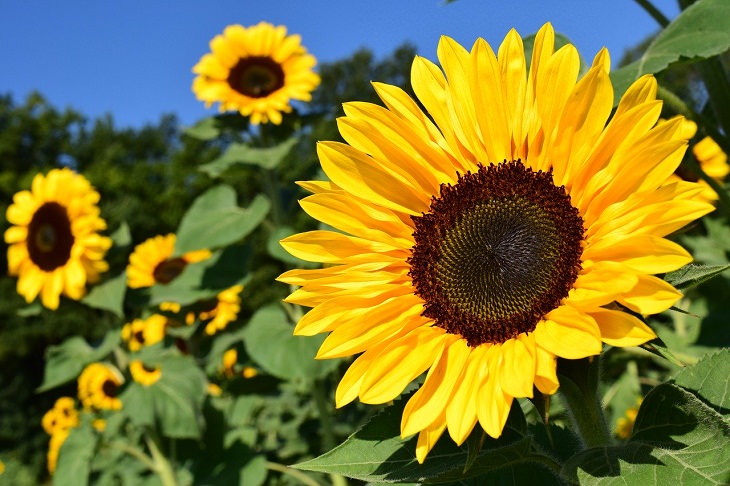
The mighty and majestic sunflower originated in the Americas way back in 1000 BC. For centuries, this bright and beautiful flower was cultivated for food and medicinal purposes. While the sunflower has fascinated us all, one particular artist really took a special liking to it.
Vincent van Gogh, one of the most famous and influential artists in history, created some stunning pieces of art through the course of his life. Some of his most famous art included gorgeous representations of sunflowers. His close-up still lives of sunflower heads became immensely popular and the artist later revealed that he had fallen in love with the beautiful flower.
Van Gogh wasn’t just attracted to its vibrant color, he was also mesmerized by all the features and characteristics of the sunflower. “The sunflower is a very strong and sturdy plant. It’s not elegant and refined. He called it the ‘rustic sunflower.’ It has the roughness and unpolishedness of the real countryside, and that’s what he felt strongly about,” says Nienke Bakker, curator of a new exhibition at the Van Gogh Museum.
Sunflowers held a profound meaning in van Gogh’s life and he created 12 paintings of them in total. In fact, even some of the last paintings he made also represented the flowers in some form. About three months before he died, Gogh wrote to his sister, seeking forgiveness that his paintings were “almost a cry of anguish while symbolizing gratitude in the rustic sunflower".
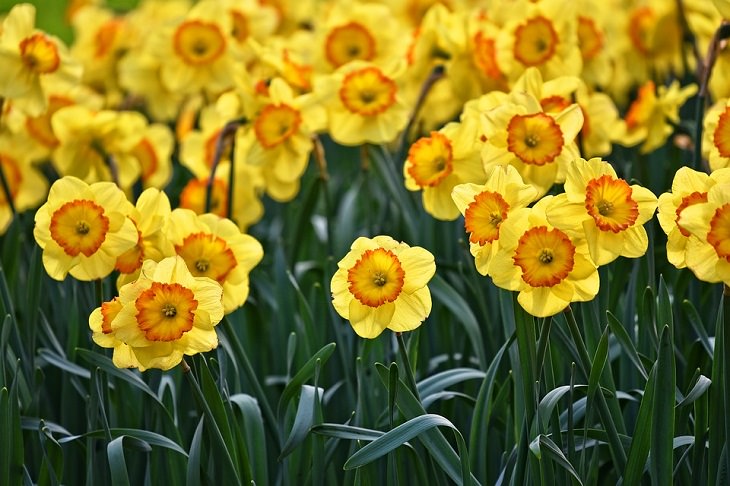
"I wandered lonely as a cloud
That floats on high o'er vales and hills,
When all at once I saw a crowd,
A host of golden daffodils;"
- William Wordsworth
One of the most famous poems to come out of England written by William Wordsworth is based on the daffodil flower. The beauty of the flower is unmatched and it has been known to symbolize friendship in various cultures.
Interestingly, the daffodil is the national flower of Wales and has been a distinctive and iconic emblem of the country. The flowers appear naturally in the region in early spring around the time of St David's Day. Their connection with Wales has come to prominence over the last century. Former British Prime Minister David Lloyd George is said to have been an advocate of the daffodil being used as a symbol. Some accounts state that it was George who apparently insisted that the flower be used during the 1911 investiture of the then Prince of Wales, the future Edward VIII.
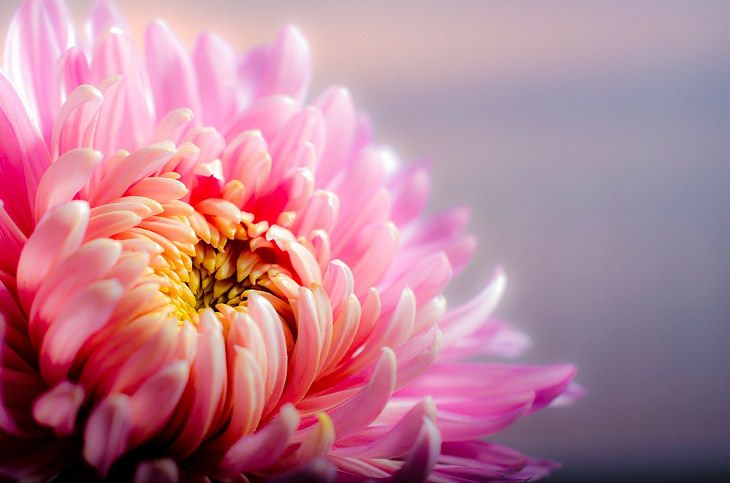
Before they were first exhibited in England in 1795, chrysanthemums had been cultivated in Chinese gardens for more than 2,500 years. Mentions of these flowers have first appeared in ancient Chinese writings as early as 15th century BC. They were used as an herbal remedy in ancient China, where its boiled roots were believed to provide relief from headaches. The flower’s popularity in the region was so immense that the Chinese city of Chu-Hsien was named after the chrysanthemum and literally translates to “Chrysanthemum City.”
From China, the chrysanthemum was brought to Japan by visiting Buddhist monks in 400 AD. Japanese emperors were so enamored by the flower’s beauty that they used it on their crest and official seal. The Japanese name for chrysanthemum is “Kiku” and there is even a National Chrysanthemum Day in the country, which is also referred to as the Festival of Happiness.
The chrysanthemum was introduced to Europe in the 17th century where it was given its Western name by the father of modern taxonomy, Karl Linnaeus. The name is derived from the Greek chrysos (meaning gold) and anthos (meaning flower). Even today, the chrysanthemum flower is recognized as the symbol of the sun in many places.
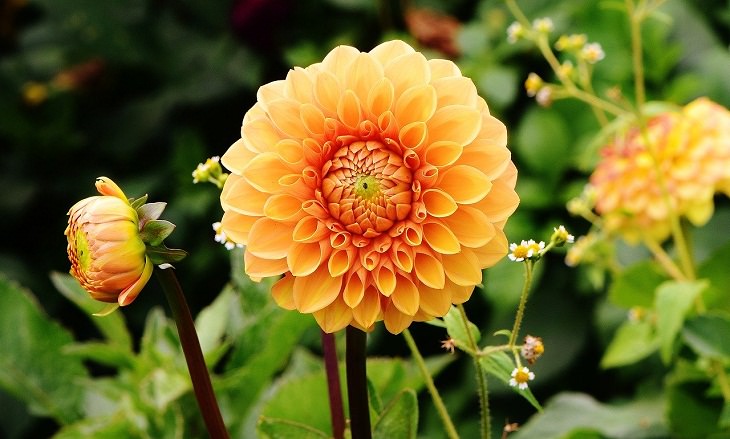
This spectacular garden flower is native to the mountainous regions of Mexico and it is named after18th-century Swedish botanist Anders Dahl. The dahlia is the official flower of the city of Seattle, and it likely originated in Central America in the 16th century. The flower was discovered by Spanish botanists who found it on the hillsides of Mexico.
Dahlias arrived in Europe at the end of the 18th century, sent over to Madrid by Spanish settlers in Mexico. Specialists in Europe even considered it as a possible source of food at the time, mainly because in the 1840s, disease had destroyed French potato crops.
Interestingly, diabetics were often given a diabetic sugar produced from dahlia tubers before insulin was discovered. Also, an herbal document written in Latin was discovered in 1929, which noted that dahlias were used by Aztecs as a treatment for epilepsy. This bushy perennial flower has undoubtedly had a rich and interesting history and continues to be employed for various uses, apart from its ornamental value, even today.
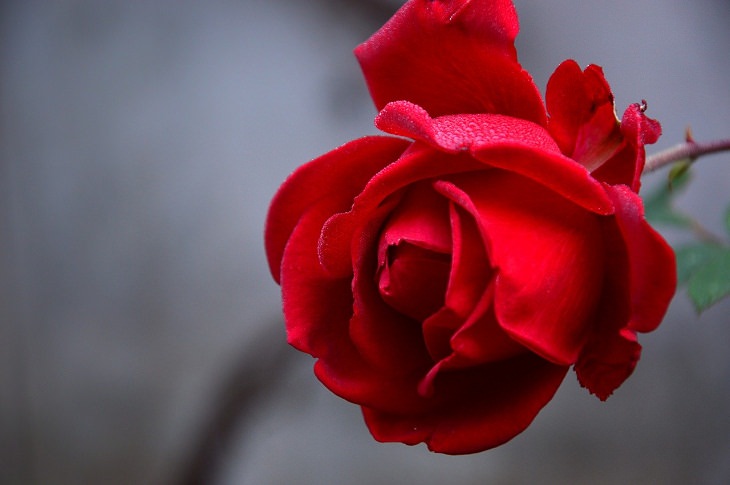
The flower needs no introduction. The rose flower has symbolized beauty and love for centuries and remains one of the most popular flowers in the world even today. The first cultivated roses were found in Asian gardens more than 5,000 years ago. Since then, it has captivated the world with its beauty and has etched its name in history in different ways. The effect and symbolism of roses have actually been noticeable throughout history.
For instance, not many know that the rose was a heraldic symbol in one of the deadliest wars in England. The War of the Roses took place in England from 1455 and 1487 between the Lancasters and the Yorks. The Lancasters were represented by a red rose and the house of Yorks was represented by a white rose. Both sides competed in a bloody battle to rule England.
The rose is also said to have inspired William Shakespeare, one of history’s greatest-ever writers. His play, Romeo and Juliet, included a famous quote on roses that was said by Juliet: “A rose by any other name would smell as sweet.”
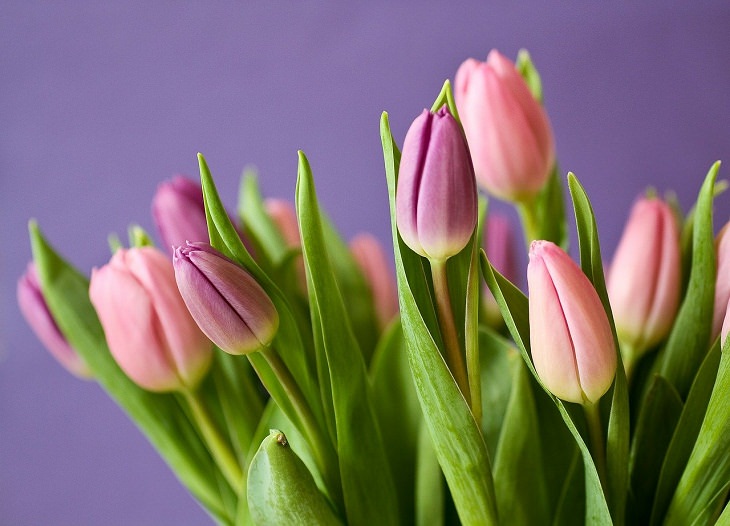
Tulips are spring-blooming flowers that are generally found in warm colors of red, pink, and yellow, or white. These brightly colored flowers are unassumingly beautiful and are known to be associated with true love. They also have a rather odd and interesting history.
In the 17th century, tulips were used as currency in the Netherlands and their value was quoted like stocks and shares. In fact, there was a time when the value of a tulip bulb was actually higher than that of gold of the same weight. Such was its demand that people often scuffled to get their hands on some precious tulip bulbs.
During the early to mid-1600s, the value of tulip bulbs rose to the extreme. They were so heavily sought after that this particular era is referred to in history as “Tulip Mania” in Western Europe. It is said that people left their jobs to become tulip growers during the time. During this period, the rarest tulip bulbs were traded for as much as six times the average person's annual salary. Incidentally, the tulip only blooms for 3 to 5 days. This means that during the Tulip Mania, an individual’s wealth would only have been good for 3-5 days. Yet, the people were obsessed with the flower beyond reason in that period.